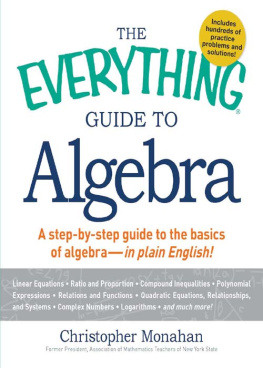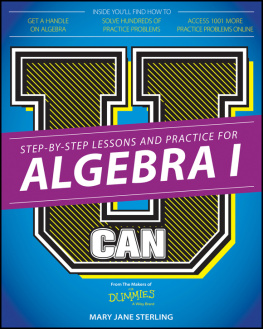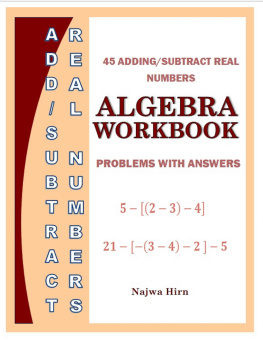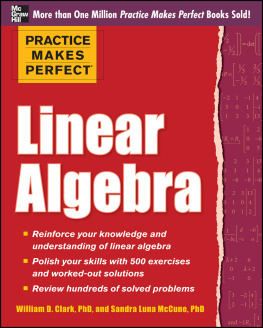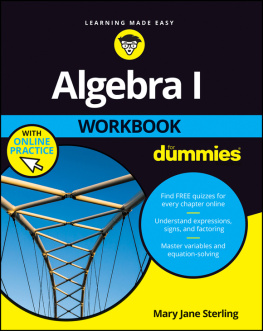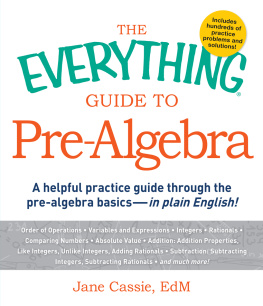Contents
Guide
Page List


Copyright 2022, 2018, 2012 by McGraw Hill. All rights reserved. Except as permitted under the United States Copyright Act of 1976, no part of this publication may be reproduced or distributed in any form or by any means, or stored in a database or retrieval system, without the prior written permission of the publisher.
ISBN: 978-1-26-428643-0
MHID: 1-26-428643-0
The material in this eBook also appears in the print version of this title: ISBN: 978-1-26-428642-3, MHID: 1-26-428642-2.
eBook conversion by codeMantra
Version 1.0
All trademarks are trademarks of their respective owners. Rather than put a trademark symbol after every occurrence of a trademarked name, we use names in an editorial fashion only, and to the benefit of the trademark owner, with no intention of infringement of the trademark. Where such designations appear in this book, they have been printed with initial caps.
McGraw-Hill Education eBooks are available at special quantity discounts to use as premiums and sales promotions or for use in corporate training programs. To contact a representative, please visit the Contact Us page at www.mhprofessional.com.
TERMS OF USE
This is a copyrighted work and McGraw-Hill Education and its licensors reserve all rights in and to the work. Use of this work is subject to these terms. Except as permitted under the Copyright Act of 1976 and the right to store and retrieve one copy of the work, you may not decompile, disassemble, reverse engineer, reproduce, modify, create derivative works based upon, transmit, distribute, disseminate, sell, publish or sublicense the work or any part of it without McGraw-Hill Educations prior consent. You may use the work for your own noncommercial and personal use; any other use of the work is strictly prohibited. Your right to use the work may be terminated if you fail to comply with these terms.
THE WORK IS PROVIDED AS IS. McGRAW-HILL EDUCATION AND ITS LICENSORS MAKE NO GUARANTEES OR WARRANTIES AS TO THE ACCURACY, ADEQUACY OR COMPLETENESS OF OR RESULTS TO BE OBTAINED FROM USING THE WORK, INCLUDING ANY INFORMATION THAT CAN BE ACCESSED THROUGH THE WORK VIA HYPERLINK OR OTHERWISE, AND EXPRESSLY DISCLAIM ANY WARRANTY, EXPRESS OR IMPLIED, INCLUDING BUT NOT LIMITED TO IMPLIED WARRANTIES OF MERCHANTABILITY OR FITNESS FOR A PARTICULAR PURPOSE. McGraw-Hill Education and its licensors do not warrant or guarantee that the functions contained in the work will meet your requirements or that its operation will be uninterrupted or error free. Neither McGraw-Hill Education nor its licensors shall be liable to you or anyone else for any inaccuracy, error or omission, regardless of cause, in the work or for any damages resulting therefrom. McGraw-Hill Education has no responsibility for the content of any information accessed through the work. Under no circumstances shall McGraw-Hill Education and/or its licensors be liable for any indirect, incidental, special, punitive, consequential or similar damages that result from the use of or inability to use the work, even if any of them has been advised of the possibility of such damages. This limitation of liability shall apply to any claim or cause whatsoever whether such claim or cause arises in contract, tort or otherwise.
Contents
Introduction
Algebra II uses the skills and concepts learned in Algebra I as well as many of the concepts learned in Geometry. You will learn many new concepts in Algebra II, the most important of which is the idea of a function. Functions are a fundamental building block for the development of higher mathematics. Questions about domain and range will appear in almost every chapter of the course. Using transformations to extend a basic function into a family of functions will help you develop a better understanding of functions and allow you to develop a mental image of the function before you look at the graph on your graphing calculator or computer. Mathematics is a tool used in nearly every aspect of the world of work. Examples for many of these applications are included in Practice Makes Perfect Algebra II Review and Workbook.
Whereas you can read a piece of literature or a document for a social studies class and then quietly contemplate the meaning of what you read, mathematics requires a more active approach. You should read the text and the examples provided for you. You should also do the guided exercises after you have finished reading a section to ensure you understand the steps involved in solving the problems. Once you have done this, then you should do the exercises at the end of the section. Check your answers with the answer key in the back of the book to verify you have done them correctly. Some problems require very little writing, and some require the use of technology such as a graphing calculator or computer software. Most of the exercises can be done with paper and pencil. Take the time to do all of the exercises. You will learn a great deal from the time and effort you put forth.
Algebra II Review and Workbook is written so that you can practice a few concepts at a time. This does not mean that the examples and exercises will not apply what you learned in a previous lesson or from other courses, but that the crux of the problem is to help you better understand the concept from that particular section. If you find that a prior concept is slowing you down, take the time to go back to that section to get a better understanding of what you are missing.
Functions: An introduction
Mathematics is known for its ability to convey a great deal of information with the use of a minimum number of symbols. While this may be initially confusing (if not frustrating) for the learner, the notation of mathematics is a universal language. In this chapter, you will learn about function notation.
Relations and inverses
One of the major concepts used in mathematics is relations. A relation is any set of ordered pairs. The set of all first elements (the input values) is called the domain, while the set of second elements (the output values) is called the range. Relations are traditionally named with a capital letter. For example, given the relation
A = {(2, 3), (1, 5), (4, 3), (2, 0), (9, 1)}
the domain of A (written DA) is {9, 1, 2, 4}. The domain was written in increasing order for the convenience of reading, but this is not required. The element 2, which appears as the input for two different ordered pairs, needs to be written only one time in the domain. The range of A (written RA) is {3, 0, 1, 3, 5}.
The inverse of a relation is found by interchanging the input and output values. For example, the inverse of A (written A1) is
A1 = {(3, 2), (5, 1), (3, 4), (0, 2), (1, 9)}
Do you see that the domain of the inverse of A is the same set as the range of A, and that the range of the inverse of A is the same as the domain of A? This is very important.
Given the relationships:
A = {(2, 4), (5, 1), (4, 0), (4, 9), (3, 1)}
B = {(7, 3), (2, 0), (9, 1), (3, 3), (6, 2), (5, 1)}


